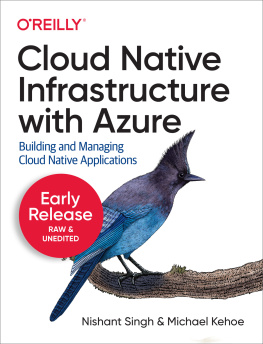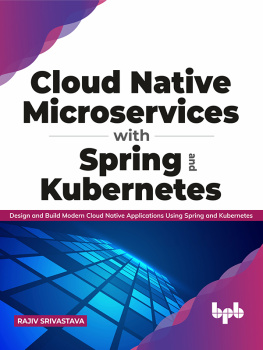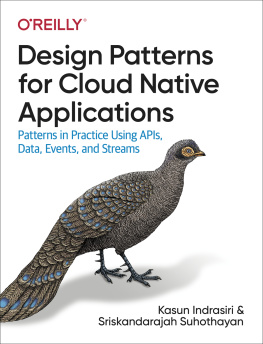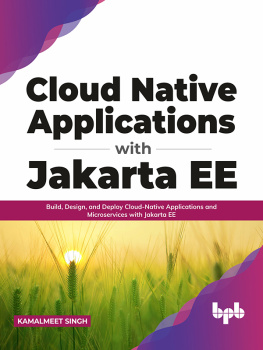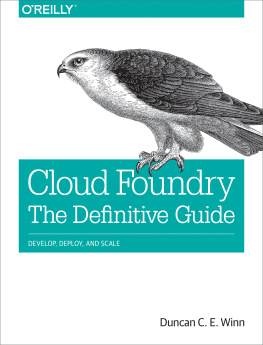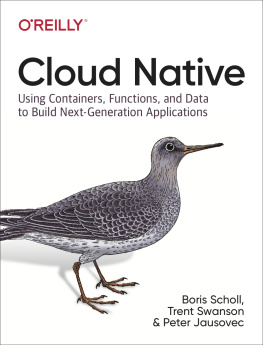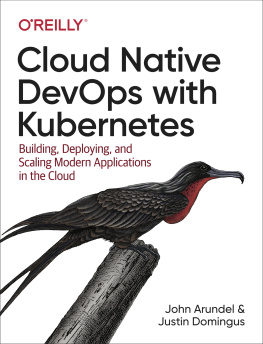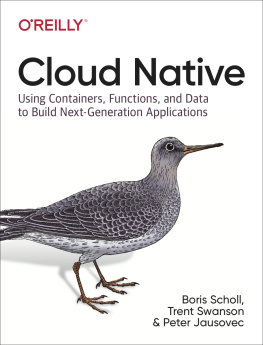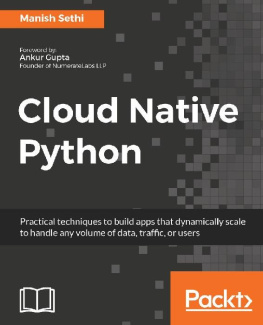Nishant Singh - Cloud Native Infrastructure with Azure: Building and Managing Cloud Native Applications
Here you can read online Nishant Singh - Cloud Native Infrastructure with Azure: Building and Managing Cloud Native Applications full text of the book (entire story) in english for free. Download pdf and epub, get meaning, cover and reviews about this ebook. year: 2022, publisher: OReilly Media, genre: Computer. Description of the work, (preface) as well as reviews are available. Best literature library LitArk.com created for fans of good reading and offers a wide selection of genres:
Romance novel
Science fiction
Adventure
Detective
Science
History
Home and family
Prose
Art
Politics
Computer
Non-fiction
Religion
Business
Children
Humor
Choose a favorite category and find really read worthwhile books. Enjoy immersion in the world of imagination, feel the emotions of the characters or learn something new for yourself, make an fascinating discovery.
- Book:Cloud Native Infrastructure with Azure: Building and Managing Cloud Native Applications
- Author:
- Publisher:OReilly Media
- Genre:
- Year:2022
- Rating:5 / 5
- Favourites:Add to favourites
- Your mark:
Cloud Native Infrastructure with Azure: Building and Managing Cloud Native Applications: summary, description and annotation
We offer to read an annotation, description, summary or preface (depends on what the author of the book "Cloud Native Infrastructure with Azure: Building and Managing Cloud Native Applications" wrote himself). If you haven't found the necessary information about the book — write in the comments, we will try to find it.
The cloud is becoming the de facto home for companies ranging from enterprises to startups. Moving to the cloud means moving your applications from monolith to microservices. But once you do, maintaining and running these services brings its own level of complexity. The answer? Modularity, deployability, observability, and self-healing capacity through cloud native development.
With this practical book, Nishant Singh and Michael Kehoe show you how to build a true cloud native infrastructure on Microsoft Azure, following guidelines from the Cloud Native Computing Foundation (CNCF). DevOps and site reliability engineers will learn how adapting applications to cloud native early in the design phase helps you fully utilize the elasticity and distributed nature of the cloud.
Chapters include:
- Introduction: Why Cloud Native?
- Infrastructure as Code: Setting Up the Gateway
- Containerizing Your Application: More Than Boxes
- Kubernetes: The Grand Orchestrator
- Creating a Kubernetes Cluster on Azure
- Observability: Following the Breadcrumbs
- Service Discovery and Service Mesh: Finding New Territories and Crossing Borders
- Networking and Policy Management: Behold the Gatekeepers
- Distributed Databases and Storage: The Central Bank
- Getting the Message
- Serverless
Nishant Singh: author's other books
Who wrote Cloud Native Infrastructure with Azure: Building and Managing Cloud Native Applications? Find out the surname, the name of the author of the book and a list of all author's works by series.

